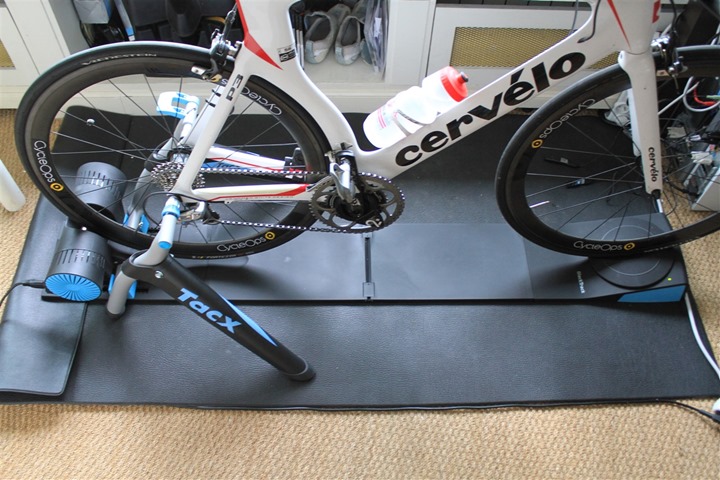A Weighty Decision: Deciding on a WiFi Weight Scale
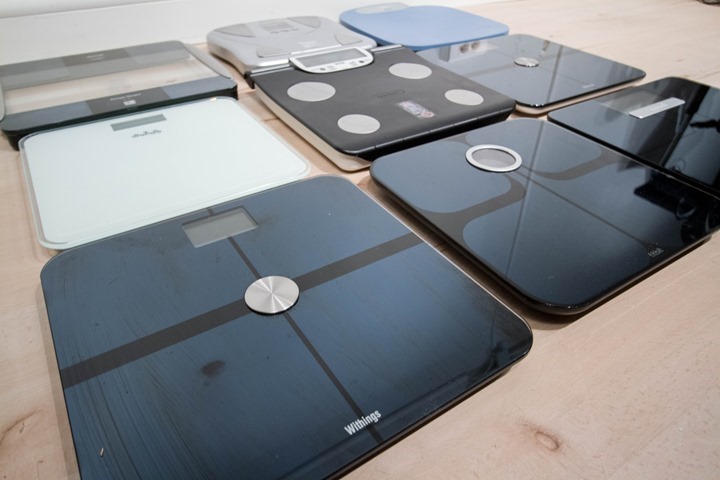
Connected scales are all the rage these days. And for good reason – they make it easy to log your weight. More importantly though, they make it hard to pretend nothing happened. So as you rolled out of bed this morning perhaps regretting yesterday’s Turkey festivities, let’s talk about how to decide on a WiFi weight scale.
Sure, you can get an inexpensive $15 bathroom scale pretty much the world around. And you know what? It’s going to work just fine. I tested that previously – they are actually pretty darn accurate in terms of weight. But if you’re like me – it’s really easy to pretend week after week that the weight will go down soon when you step on the scale. Only to realize a month later nothing has really changed.
That’s the core difference here: A graphical and automatically logged chart of what your body weight is really doing (whether your goal is loss, gain, or constant).
But there are a lot of connected scale options. Some great, some overpriced, and some crap. My objective here is to talk through the major WiFi connected contenders (and explain why I’m not going into the non-WiFi models). More importantly – to talk about what you need to know beyond the model. As you’ll soon see, it’s not about the scale you choose, but rather it’s about who your scale company sleeps around partners with. Got it? Good.
The Contenders:
First, let’s do a quick overview of the three brands that make WiFi scales, giving you a total of four units to look through. After I talk about the basics, I’ll dive into the specific features of each scale and then the pros and cons of the platforms associated with each scale.
Withings WS-30 & WS-50:
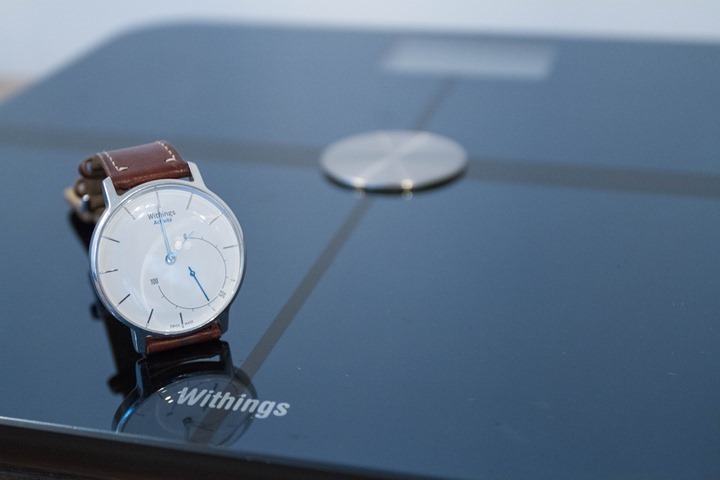
First up we’ve got two different options from Withings. The $99 WS-30, and the $149 WS-50 (Note: Currently on Black Friday sale for $69 and $99 each). The core differences between them is that the WS-30 doesn’t do body fat, while the WS-50 does. Additionally, the WS-50 adds a bunch of ‘environmental’ metrics like room temperature and CO2 levels. Both scales are able to automatically track multiple people in your house, allowing you to tie data to their respective accounts.
I’ve used both of these scales for years, and from a hardware and software standpoint are among the best out there. Withings was the first WiFi scale company, and they’ve done a good job of holding that ground in terms of providing a reliable product, and an extensive software platform for 3rd parties to hook into.
Fitbit Aria:
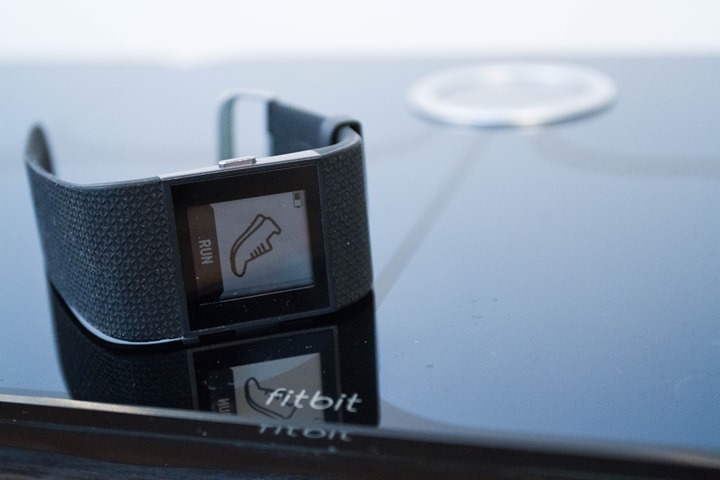
Fitbit entered the scale realm almost 4 years ago now, with the Fitbit Aria scale. Like the Withings units, it comes in two variants (black, and white). And like the Withings WS-30, it too focuses on the basics. Unlike the WS-30 though, it does keep track of body fat. And like the other scales, it too can track multiple people in your household (or small business) and tie the data to their own accounts.
The scale costs $129, and even includes a smiley face on one of the screens. Because the world never had too many emoticons. While Fitbit doesn’t have as many 3rd party platform partners, they do have the majority of the big ones out there such as MyFitnessPal. In fact, this partnership with MyFitnessPal for both Fitbit and Withings is quite interesting, but more on why in a moment.
Garmin Index:
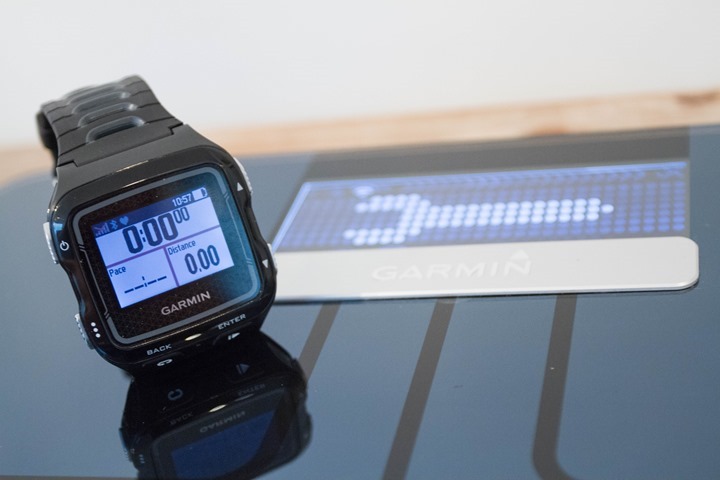
Finally, we’ve got the recently announced Garmin Index WiFi scale, which just started shipping in tiny quantities on Wednesday. While this scale looks pretty similar to the others, it does have a few notable differences. For example it displays and captures more body data than the other scales – such as muscle mass and bone mass.
Of course, like the others it’s tied into the manufacturer’s health platform, which in this case is the Garmin Connect platform. So if you’re already in the Garmin realm, then it’s the one scale that can get the most data into that platform via WiFi. It’s the same price as the Withings WS-50, at $149 (when the Withings isn’t on sale anyway).
Everybody Else:
So what about some of the non-WiFi models? Well honestly, they’re a tough sell. All of them require some other device, be it a watch, a phone, or some old school display connected to them. Additionally, some of the wannabe connected scales require another adapter to convert it from being not-WiFi to WiFi. That’s sorta like when you claim that eating deep-fried French fries count as a vegetable. Yes, technically true – but missing the point.
Bluetooth Scales have become slightly more popular in the last few years, mostly made by companies you’ve never heard of (though there are some exceptions to this, such as Wahoo’s scale). The lack of major brands is important because in most cases you’re dependent on that app to get data. Further, in most cases you really want to get that data to a 3rd party site like MyFitnessPal. So if those companies fail to regularly update their apps, that can be a challenge. Again, there are definitely some BT scales out there that are probably worth poking into, but for now I’m keeping this mostly focused on WiFi scales (if for no other reason than The Girl is threatening me with bodily harm if I increase our scale count beyond the current 12 scales).
And what about ANT+ Weight Scales? Well that ship sailed (and sunk) long ago. I know, it sucks for those of us that have said scales today, but realistically they just aren’t supported by anyone. Garmin stopped adding support to their watches 2-3 years ago (though oddly does maintain support on their newest Edge units). And even Garmin’s own scale doesn’t do ANT+. There’s just no logical reason to support it when WiFi is ubiquitous and data platforms store everything. No doubt there are edge cases (for example, soldiers deployed), but even those individuals would likely be better served by a Bluetooth Smart scale than an ANT+ scale.
The differences:
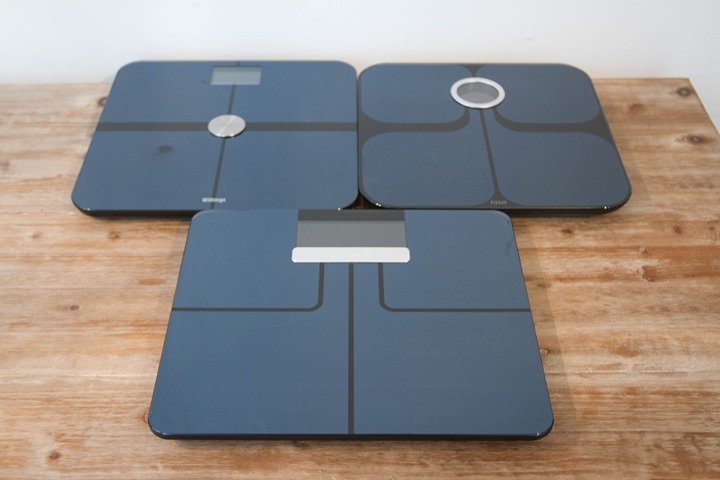
So what’s different about the scales themselves? How do they differ at a hardware layer? Well it mostly comes down to the specific metrics you get out of them, such as body fat or bone mass. Though there are some minor differences in maximum weight permitted as well as maximum users. On each scale’s websites and apps, the general graphs and such are quite similar. There aren’t any earth-shattering revelations or differences to be had there.
Here’s the run-down of the key physical differences between each scale:
Weight Scale Details
General: Price$69 (norm $99)$99 (norm $149)$149 $129 General: Display MetricsLBS/KG/StonesLBS/KG/StonesLBS/KG/StonesLBS/KG/StonesGeneral: Max Weight396lbs/180kg396lbs/180kg400lbs/181kg350lbs/159kgGeneral: Color OptionsBlack, WhiteBlack, WhiteBlack, WhiteBlack, WhiteGeneral: Smiley Face EmoticonNoNoNo:)General: Maximum Users8 users8 users16 users8 usersGeneral: Battery Type4xAAA Batteries4xAAA Batteries4xAA Batteries4xAA BatteriesData: WeightYesYesYesYesData: Body Fat (%)NoYesYesYesData: Body Mass Index (BMI)YesYesYesYesData: Water PercentageNoNoYesNoData: Bone MassNoNoYesNoData: Muscle MassNoNoYesNoData: Lean MassNoNoNoYesData: Indoor Air QualityNoYesNoNoData: Heart RateNoYesNoNoConnectivity: WiFiYesYesYesYesConnectivity: Bluetooth SmartYesYesYesYesConnectivity: ANT+NoNoSetup/Config OnlyNoApps: Mobile Phone AppsiOS/AndroidiOS/AndroidiOS/Android/Windows PhoneiOS/Android/Windows PhoneApps: Can setup with desktopYesYesYesYes
As you can see, the core differences are mostly about metrics. There are some minor differences in terms of batteries and such, but none of those should sway your purchasing decision (unless you have some odd hatred of AAA batteries).
Which other devices do you use?:
Now that we’ve compared features, let’s get to some decisions. Let’s talk about Rule #1: That’s the “already have a device from that company” rule. That rule states that if you already have another device from that company, that you generally want to keep it in the family. Meaning, if you already have a Fitbit activity tracker – than it’s best to just get the Fitbit scale. And if you already have a Withings Aura sleep tracker – the same is true there, buy the Withings scale.
This rule is also mostly true for Garmin, but less so if you use other platforms. That’s because Garmin doesn’t really make it easy for 3rd parties to support the scale. For example, Withings has 106 apps they integrate with. Garmin has…well…1 (MyFitnessPal).
Here’s a simplified version of what I mean. In an ideal world, you’d have the same scale as your wearable – everything is great. Where on the second line, you’re using a different scale from the wearable. In this case, it may be great now, but could fall over in the future. And lastly, another example where it just doesn’t work at all in terms of having your weight and activity data in two different spots.
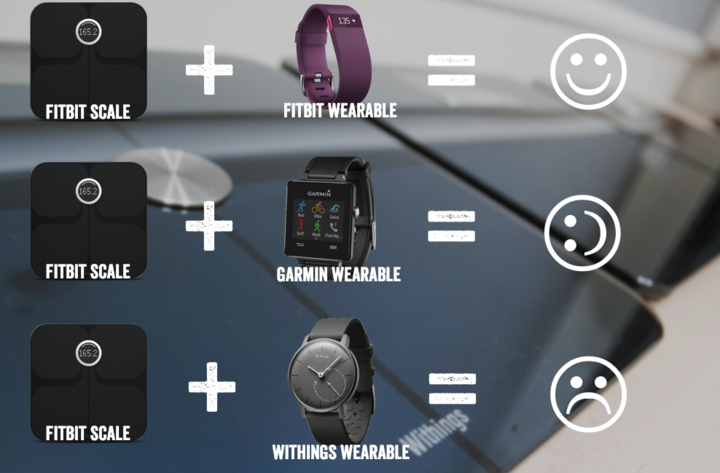
Yes, you can technically get the data from a Fitbit or Withings scale to Garmin connect as noted above, but it’s a bit convoluted, and again, there’s no guarantee Garmin won’t decide to purposefully break that down the road (be it tomorrow or a year from now).
The 3rd Party Sites:
Let me be super clear: The most important factor in choosing one of these scales is whether or not said scale connects to your fitness/health tracking platform of choice. Seriously – that’s it.
By and large, these scales all basically work the same way at the same accuracy level and cost roughly the same. Basically, the decision of which piece of hardware to get is a wash. Sure, some scales like the Withings offer heart rate and oxygen sensing – but as noted above, both are useless features.
Instead, what you want to focus on is ensuring that you can get the data from your scale to the site that you use. No doubt you’ll use the scale’s native app – such as the Fitbit, Garmin, or Withings Apps. But when it comes to fitness or calorie tracking sites, most people don’t use those sites. Instead, they’re using something like MyFitnessPal, MapMyFitness, Garmin Connect, or others. There are dozens (well, probably hundreds) of these sites.
Both Withings and Fitbit integrate well with 3rd party sites. If you turn the way-back machine on for Withings, you’ll remember at the very beginning they were all about getting 3rd parties to integrate with their platform. That legacy is ultimately why they’re in the position they’re in. And the same is mostly true for Fitbit and weight scale integration.
These integrations occur behind the scenes after you’ve linked your accounts together. It usually only takes a second one, and then from there you’re good to go forever. It’s true: Every once in a while I’ll forget about some account I linked years ago and then find my weight data up to date there. Kinda funny.
To understand a bit of the compatibility offerings, here’s links to each company’s partner pages. You can view all of the partners there, and figure out if the platform you use is on the list:
Withings Apps/Site Partners (106 apps as of today)
Fitbit App/Site Partners (32 apps as of today)
Garmin App/Site Partner (1 app as of today: MyFitnessPal)
Note that some partners don’t support weight data, for example, Strava doesn’t sync weight data from Fitbit – just activity tracks. So I’ve tried to exclude those from the above list. I also do find it refreshing that even Withings Scales can push to the Fitbit site. Kinda neat.
Also, in some cases, I find the partnerships don’t actually work. For example, my Withings Scale and TrainingPeaks account is paired – yet it doesn’t actually get any data from Withings to Training Peaks. I suspect that feature died years ago. (Update: A few readers in the comments have said there’s does work, so perhaps even though I’ve recently reset the connection, something else is still broke for just me. Good for others though!)
Finally, I should clarify one minor loophole that I’ve noted above, which is the MyFitnessPal loophole. See, for the last year or so, since MyFitnessPal and Garmin Connect hooked up – they’ve sorta traded weight data, though hardly in any official manner. Essentially if you hooked up your Withings or Fitbit scales to MyFitnesPal, and then connected Garmin Connect to MyFitnessPal, that weight data will actually sync backwards (or forwards?) into Garmin Connect. It isn’t always reliable, or quick – but it does generally get there.
So, to make it simple, it looks like this:
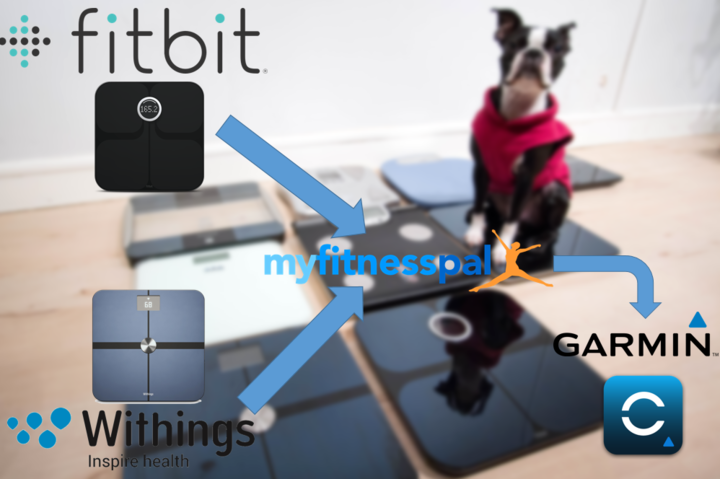
Now, it remains to be seen whether or not Garmin kills that down the road. I chatted almost a year ago with them about it, and they didn’t at the time seem to have any plans to break it (nor advertise it). But it’s there today. Hopefully Garmin continues to take the high road and remembers that people are still buying $100-$600+ GPS watches and bike computers from Garmin (and power meters), which is the only reason they’d actually want their weight data in Garmin Connect. And typically, those that have gone to the trouble of setting this connectivity up are their most loyal fans. Not really the group you’d want to upset.
For the fun of it, I asked Garmin if they had any plans to change or otherwise break this functionality. They responded that they “don’t have plans to change the syncing process”.
Finally, to understand the difference in data shown on Garmin Connect, first is what my weight looks like using the Garmin Index Scale:

Next, here’s a recent data point where the data came from the Withings WS-50 WiFi Scale, via MyFitnessPal but ending up on Garmin Connect:
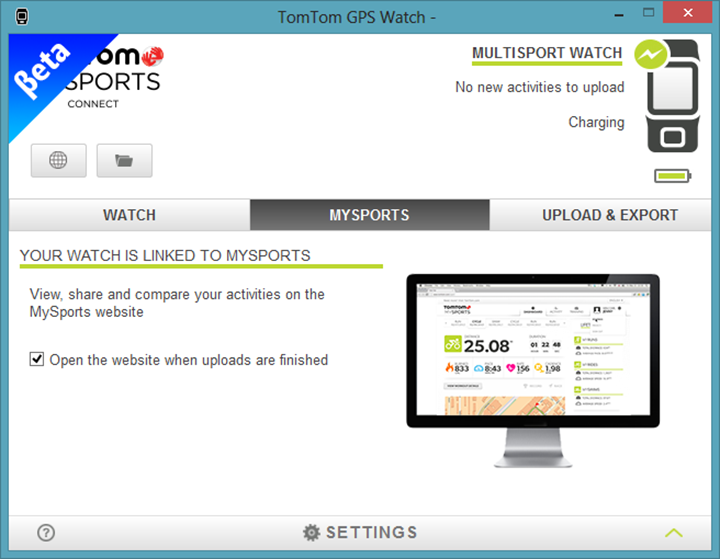
So yes, just the weight gets transferred – not everything else. You’ll still get graphs and the like though on Garmin Connect, just not the extra metrics.

So again, really comes down to what data you want and where you want it.
Wrap-up
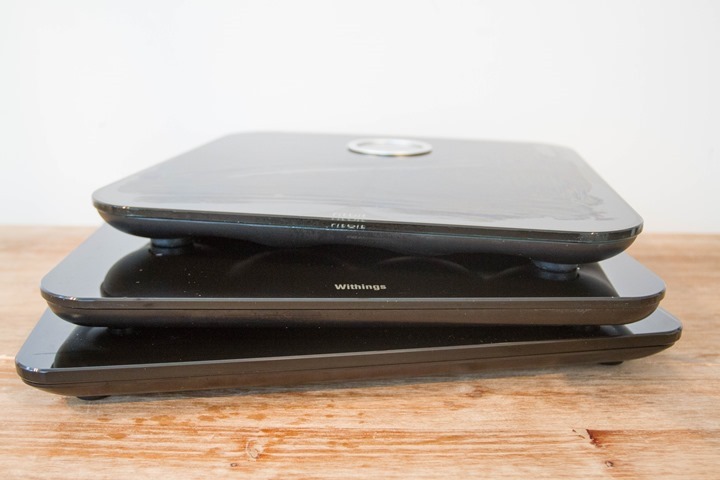
So ultimately, when choosing a scale, I’d look at it in the following order:
A) What metrics do you want? Just weight? Go simple with something like the WS-30, since it can push to just about anything including Garmin Connect
B) What other devices do you already have? If you already have a Fitbit wearable, just get a Fitbit Scale. Whereas if you already have Garmin and want the extra data, then go Garmin.
C) What other partnerships do you want/need for your data? Are you using MyFitnessPal? No problem, everyone supports that. But what if it’s a smaller app? Then you may need to look around and see who supports it.
The good news here is that the decision tree is fairly simple – so it’s not tough to get going with a new scale and pretend like yesterday’s turkey, gravy, and whatever that pumpkin creation was you ate – never happened. Right?
Copyright DC Rainmaker – Updated March 23rd, 2016 @ 7:14 am
Garmin Index Smart WiFi Scale$149LinkLinkLink
Withings WS-50/Smart Body Analyzer WiFi Weight Scale$149LinkLinkLink
Withings WS-30 WiFi Weight Scale$99LinkLinkLink
FitBit Aria WiFi Weight Scale$129LinkLinkLink
With that – thanks for reading and have a great weekend ahead!
